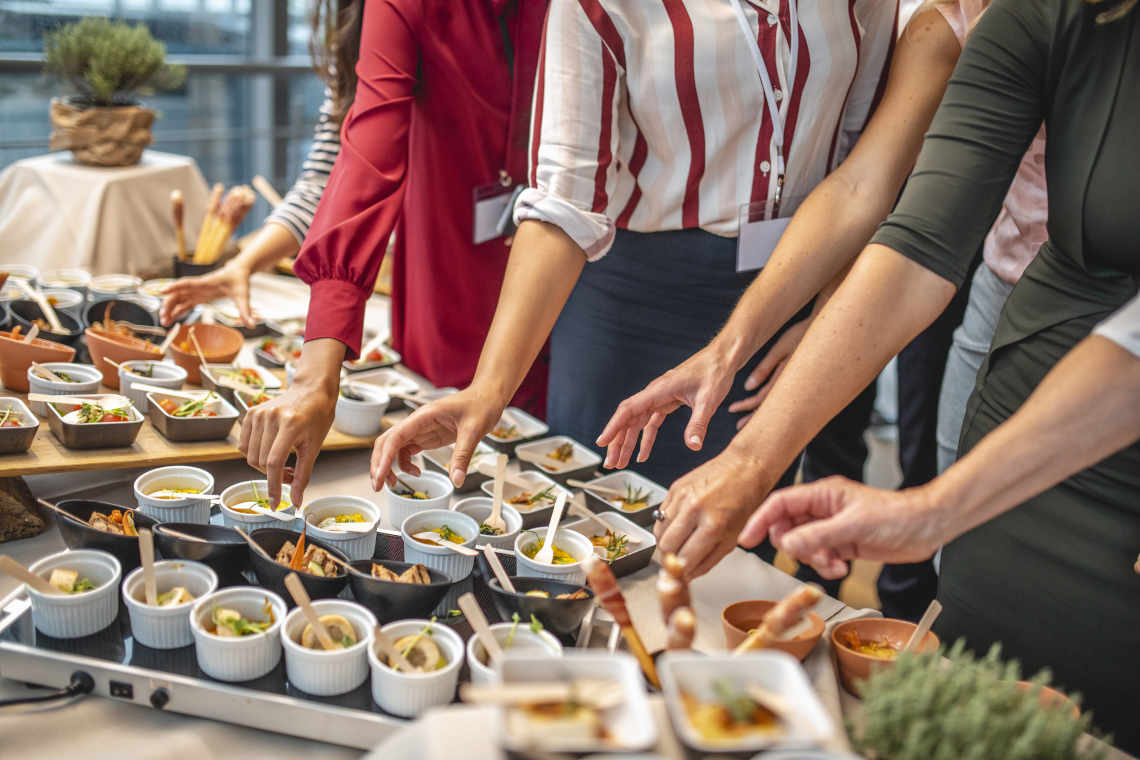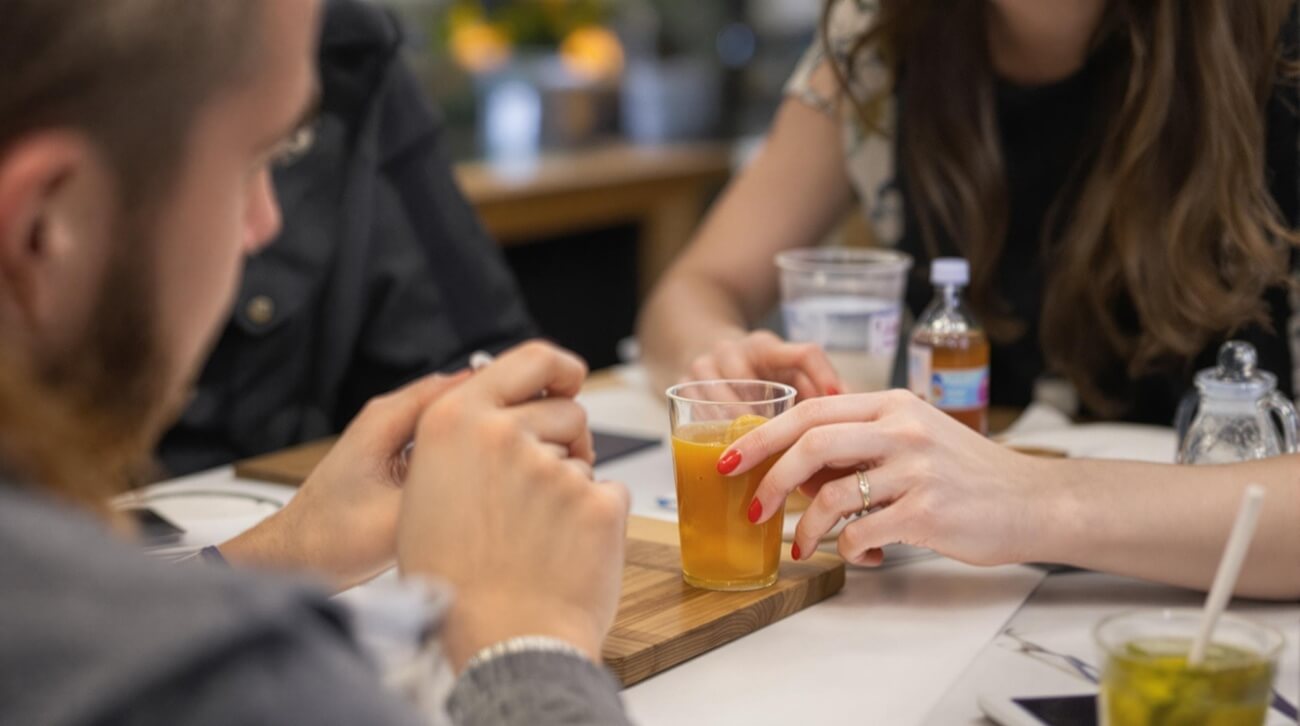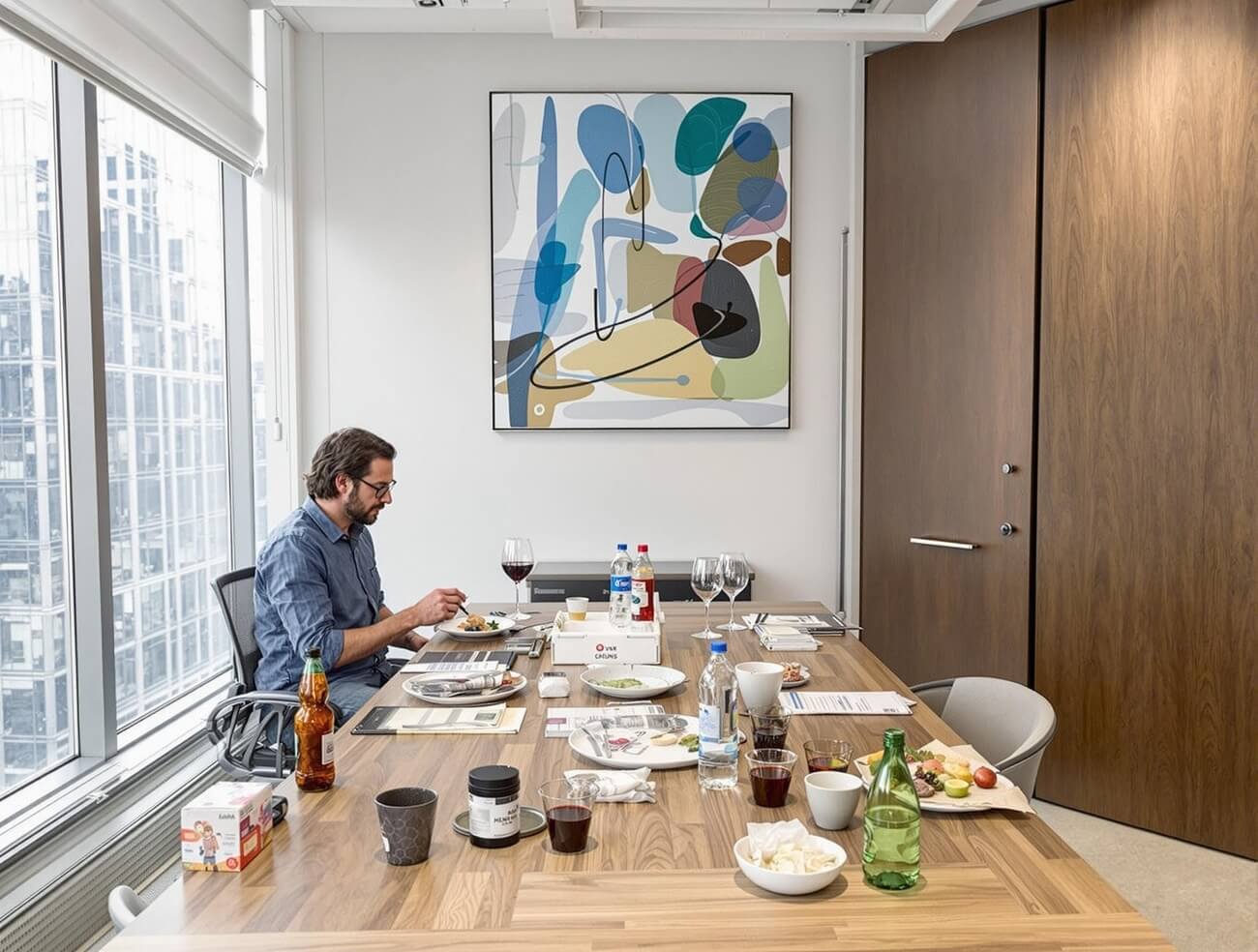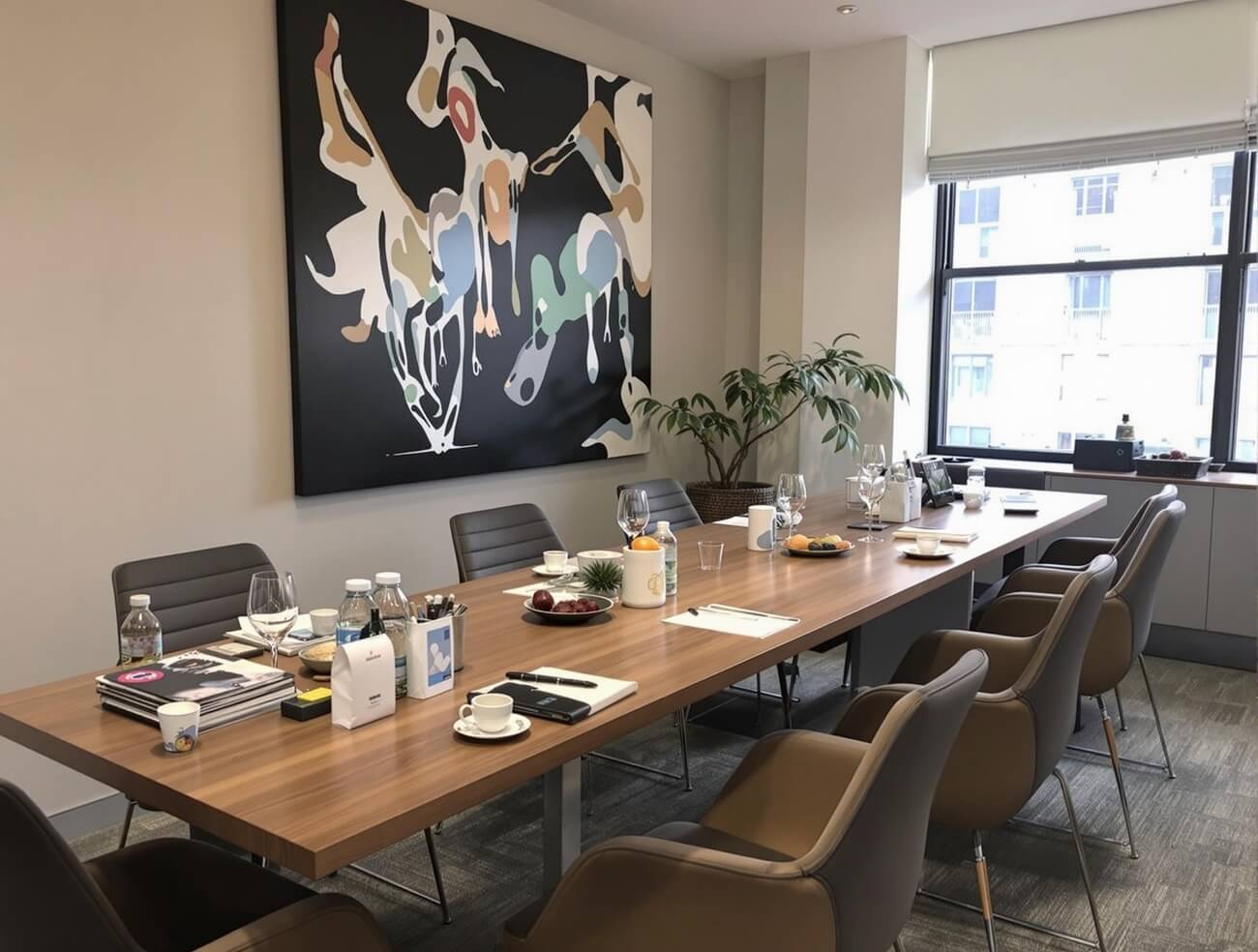中心位置食品味道測試

這種方法涉及聚集不同的人對食品進行採樣和評級,從而提供對風味特徵、外觀美學和整體消費者接受度的寶貴見解。
在向世界推出新菜餚或新產品之前,我們如何真正衡量它的吸引力?中心位置的食品味道測試提供了答案,為企業提供了一個受控環境來收集潛在消費者的即時回饋。
什麼是中心位置食品味道測試?
這是一種在受控環境下收集消費者對食品和飲料產品回饋的研究技術。它旨在評估產品的感官屬性,例如味道、香氣、質地和外觀。與可能在生產設施或零售店進行的傳統味道測試方法不同,中心位置食品味道測試在中立位置進行,確保結果公正。
中心位置食品味道測試的重要性

這種測試方法對於食品市場的企業至關重要。透過直接吸引消費者並收集回饋,公司可以深入了解他們對不同產品的偏好、期望和整體滿意度。這些資訊可以幫助企業決定產品配方、包裝設計、行銷策略和潛在的新口味產品。
此外,口味測試使公司能夠將其產品與競爭對手進行比較,確定需要改進的領域,並在競爭日益激烈的市場中保持領先地位。
中心位置食品味道測試的好處
它為企業提供了廣泛的好處,例如:
- 深入的消費者洞察: 透過進行這項研究,企業可以直接了解消費者的見解。這使他們能夠了解消費者的喜好,確定與目標受眾產生共鳴的風味特徵,並發現市場中的潛在差距。
- 產品開發: 中心位置食品味道測試是產品開發的寶貴工具。它允許企業測試其產品的不同變體、評估消費者偏好並微調其配方。這種迭代方法可以最大限度地降低推出不符合消費者期望的產品的風險,並增加在市場上取得成功的可能性。
- 品牌差異化: 中心位置的食品味道測試使企業能夠透過提供獨特的口味、創新的包裝和卓越的味覺體驗來區分自己的品牌。透過根據消費者回饋持續提供高品質的產品,企業可以建立忠實的客戶群並確立自己的行業領導者地位。
- 行銷策略: 它可以顯著影響行銷策略。口味測試的正面回饋可以成為建立信任、信譽和品牌忠誠度的強大行銷工具。此外,在口味測試期間收集的消費者洞察可以為行銷活動提供訊息,使企業能夠製作與目標受眾產生共鳴的有針對性的信息。
- 風險緩解: 該測試透過在產品進入市場之前為企業提供有價值的回饋來幫助減輕這些風險。透過解決口味測試中發現的任何疑慮或問題,企業可以改善其產品並最大程度地減少負面消費者體驗的可能性。
中心位置食品味道測試的當前趨勢和技術

在技術進步和不斷變化的消費者偏好的推動下,該領域不斷發展。以下是口味測試領域目前應用的一些趨勢和技術:
- 虛擬實境(VR): 虛擬實境 (VR) 技術改變了中心位置食品味道測試的進行方式。透過模擬真實的品嚐環境,企業甚至可以遠端為參與者重現感官體驗。 VR技術提高了味覺測試結果的準確性和可靠性,提供了更身臨其境和引人入勝的感官評估過程。
- 人工智慧(AI): 人工智慧驅動的工具正在透過自動化研究過程的各個方面來徹底改變這項測試。從資料收集到分析,人工智慧演算法可以有效率地處理大量的感知資料。這節省了時間和資源,並使企業能夠從味覺測試期間收集的大量感官資訊中獲得有價值的見解。
- 生物辨識測量: 心率監測和臉部表情分析等生物辨識測量正在整合到中心位置的食品味道測試中。生物辨識測量可以洞察情緒和生理反應,幫助企業客製化產品以引發正面的消費者體驗。
企業中心位置食品風味測試的機會
以下是企業可以利用這種研究技術的一些關鍵領域:
- 包裝優化: 包裝對於消費者認知和購買決策至關重要。中心位置的食品味道測試讓企業能夠深入了解包裝對感官體驗和消費者偏好的影響。透過根據口味測試回饋優化包裝設計,公司可以增強整體產品體驗,從競爭對手中脫穎而出,並吸引更多消費者。
- 有針對性的行銷活動: 中心位置的食品口味測試可以產生寶貴的消費者洞察,可用於有針對性的行銷活動。透過了解目標受眾的偏好和特徵,企業可以客製化行銷訊息以引起特定消費者群體的共鳴。這種個人化方法提高了行銷活動的有效性,從而提高了參與度和轉換率。
- 餐廳和咖啡館的菜單規劃: 對於酒店業的企業來說,中心位置的食品口味測試提供了菜單規劃和優化的機會。透過進行口味測試,餐廳和咖啡館可以收集有關潛在菜單項目的回饋,評估消費者的喜好,並改進他們的產品。這可確保菜單符合目標顧客的口味和偏好,進而增強用餐體驗並提高顧客滿意度。
企業中心位置食品味道測試面臨的挑戰

這種方法有其自身的一系列挑戰。認識到這些障礙對於企業有效利用見解並確保結果的可靠性至關重要。以下是企業在口味測試中經常面臨的一些挑戰:
- 招募參與者: 為口味測試找到目標群體的代表性樣本可能具有挑戰性,並且選擇中的任何偏差都可能會扭曲結果。
- 環境因素: 中心位置可能無法完美複製產品通常消費的環境。氣氛、照明或溫度的差異會影響參與者的感知。
- 感覺疲勞: 當參與者被要求在一次會議中品嚐多種產品時,他們可能會感到感官疲勞,從而影響他們的評估。
- 光環效應: 如果參與者了解品牌或有先入為主的觀念,就會對他們的回饋產生正面或負面的影響。
- 成本和物流問題: 組織口味測試活動可能會佔用大量資源,需要合適的場地、設備和協調工作。
是什麼讓 SIS International 成為頂尖的中心位置食品味道測試公司?
SIS國際 是中心位置食品口味測試領域公認的領導者,為企業提供專業知識、尖端設施和以消費者為中心的見解的強大組合。憑藉 40 多年的市場研究經驗,我們幫助企業完善產品並在不斷變化的食品產業中獲得競爭優勢。
超過四十年的專業知識
SIS International 在食品口味測試方面的豐富經驗使我們成為值得信賴的合作夥伴。我們在行業中的長期存在確保我們提供可靠和全面的結果,使企業能夠創造出消費者喜愛的產品。
紐約的戰略中心位置
位於紐約這個多元化烹飪口味和消費者偏好的全球中心, 安全資訊系統 提供無與倫比的接觸不同人群的機會。這個中心位置使企業能夠從具有高度代表性的受眾那裡獲得見解,確保其產品在各個市場引起共鳴。
先進的測試設施
我們最先進的中心位置測試設施旨在複製現實世界的消費環境。 SIS 配備先進的感官分析工具和舒適的測試空間,確保參與者獲得準確、高品質的回饋。
接觸多元化的消費者群體
紐約的文化和人口多樣性是無與倫比的,並且 安全資訊系統 透過招募廣泛的參與者進行中心位置測試來利用這一優勢。這種方法可確保企業收到反映目標受眾不同品味和偏好的回饋。
客製化測試解決方案
在 SIS International,我們了解每件產品都是獨一無二的。我們的食品口味測試服務是根據每個客戶的目標量身定制的。
數據驅動的產品成功洞察
SIS 超越基本回饋,提供可操作的見解,幫助企業改進其產品。從味道和質地到包裝吸引力,我們全面的數據為品牌提供了在市場上脫穎而出的知識。
適合各種規模企業的經濟實惠的解決方案
SIS International 提供經濟高效的中心位置食品口味測試服務,滿足從新創公司到大型企業的各種需求。我們對負擔能力的承諾確保所有客戶的投資都能獲得非凡的價值。
監理合規方面的專業知識
了解食品安全和標籤法規可能很複雜,但 SIS 簡化了流程。我們的測試服務可確保您的產品符合業界標準,並維護您的品牌聲譽和消費者信任。
時間敏感項目的快速週轉
產品開發的期限通常很緊迫,而 SIS 深知對速度的需求。我們高效的流程和簡化的工作流程使企業能夠快速獲得可操作的結果,從而加快上市時間。
對客戶成功的承諾
SIS International 致力於支援客戶實現其目標。將個人化服務與先進方法結合,確保每個專案都能交付有意義的成果,推動產品創新和市場成功。


